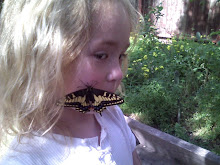Before I tell you what I have seen in dreams, I want you to understand something that I have seen and felt would be comming now for many years. This is taken directly from Wikipedia..
Parthenogenesis
From Wikipedia, the free encyclopedia
The term is sometimes used inaccurately to describe reproduction modes in hermaphroditic species which can reproduce by themselves because they contain reproductive organs of both sexes.
Asexual reproduction
Parthenogenesis is seen to occur naturally in aphids, Daphnia, rotifers, nematodes and some other invertebrates, as well as in many plants. Komodo dragons and the hammerhead- and blacktip sharks have recently been added to the list of vertebrates—along with several genera of fish, amphibians, and reptiles—that exhibit differing forms of asexual reproduction, including true parthenogenesis, gynogenesis, and hybridogenesis (an incomplete form of parthenogenesis). As with all types of asexual reproduction, there are both costs (low genetic diversity and therefore susceptibility to adverse mutations that might occur) and benefits (reproduction without the need for a male) associated with parthenogenesis. The offspring of parthenogenesis will be all female if two like chromosomes determine the female sex (such as the XY sex-determination system), but they will be male if two like chromosomes determine the male sex (such as the ZW sex-determination system), because the process involves the inheritance and subsequent duplication of only a single sex chromosome. The offspring may be capable of sexual reproduction, if this mode exists in the species. In many cases, parthenogenesis occurs when one gender (typically the male) is unavailable in the general vicinity. Once males are again available, the parthenogenesis-created females would be capable of mating with the males and creating normal offspring. Parthenogenesis is distinct from artificial animal cloning, a process where the new organism is necessarily genetically identical to the cell donor. In cloning, the nucleus of a diploid cell from a donor organism is inserted into an enucleated egg cell and the cell is then stimulated to undergo continued mitosis, resulting in an organism that is genetically identical to the donor. Parthenogenesis is different, in that it originates from the genetic material contained within an egg cell. Egg cells may be produced via meiosis or mitosis oogenesis. If by mitosis, the egg that undergoes parthenogenesis can be either haploid or diploid, leading to a number of possible outcomes in terms of the genetic fingerprint of the parthenogen. A diploid parent organism that undergoes parthenogenesis via meiosis will create haploid offspring with a new genetic fingerprint due to crossing over of the chromosomes in the parent. Because there are so many variables in parthenogenesis, there is little that can be said for sure unless the specific methods of the particular parthenogenetic tendencies of an organism are known. A litter of offspring resulting from parthenogenesis may contain genetically identical siblings. In organisms possessing an XY chromosome system, parthenogenic offspring are always female, but they are not necessarily genetically identical to one another or to their mother (some chromosome segments may differ because of meiosis).
Parthenogenesis may be achieved through an artificial process as described below under the discussion of mammals.
Alternation between parthenogenesis and sexual reproduction is called heterogamy. A form of reproduction related to parthenogenesis, but that only requires the presence of sperm that do not fertilize an egg, is known as gynogenesis. In hybridogenesis the sperm fertilizes the egg, but its chromosomes are not carried to subsequent generations.
Insects
Parthenogenesis in insects can cover a wide range of mechanisms.
The different forms include:
- Thelytoky - parthenogenesis in which only female offspring are produced and no mating is observed
- Pseudogamy (or gynogenesis or sperm-dependent parthenogenesis) - here mating occurs and the eggs require activation by entry of sperm but only the maternal chromosomes are expressed
- Automixis - parthenogenesis in which the eggs underwent meiosis
- Apomixis - parthenogenesis in which the eggs did not undergo meiosis
Polyembryony is another process that produces multiple clonal offspring from a single egg. This is known in some hymenopteran parasitoids and in Strepsiptera. In automictic species the offspring can be haploid or diploid. Diploids are produced by doubling or fusion of gametes after meiosis. Fusion is seen in the Phasmatodea, Hemiptera (Aleurodids and Coccidae), Diptera, and some Hymenoptera. In addition to these forms is hermaphroditism, where both the eggs and sperm are produced by the same individual, but is not a type of parthenogenesis. This is seen in three species of Icerya scale insects.
Parasitic bacteria like Wolbachia have been noted to induce automictic thelytoky in many insect species with haplodiploid systems. They also cause gamete duplication in unfertilized eggs causing them to develop into female offspring.
An example of non-viable parthenogenesis is common among domesticated honey bees. The queen bee is the only fertile female in the hive; if she dies without the possibility for a viable replacement queen, it is not uncommon for the worker bees to lay eggs. Worker bees are unable to mate, and the unfertilized eggs produce only drones (males), which can only mate with a queen. Thus, in a relatively short period, all the worker bees die off, and the new drones follow. In one subspecies from South Africa, Apis mellifera capensis, workers are capable of producing diploid eggs parthenogenetically, and thus the queen can be replaced if she dies. It is believed that a few other bees may be truly parthenogenetic, for example, at least one species of small carpenter bee, in the genus Ceratina. Many parasitic wasps are known to be parthenogenetic, sometimes due to infections by Wolbachia. In Cataglyphis cursor, a European formicine ant, the queen can reproduce by parthenogenesis. The workers are fertile and can mate with the males in the colony. In Central and South American electric ants (aka little fire ants), Wasmannia auropunctata, queens produce more queens through parthenogenesis. Sterile workers usually are produced from eggs fertilized by males. In some of the eggs fertilized by males, however, the fertilization can cause the female genetic material to be ablated from the zygote, in a process called ameiotic parthenogenesis. In this way, males pass on only their genes to become fertile male offspring. This is the first recognized example of an animal species where both females and males can reproduce clonally resulting in a complete separation of male and female gene pools.
Crustaceans
Crustacean reproduction varies both across and within species. The water flea Daphnia pulex alternates between sexual and parthenogenetic reproduction.[9] Among the better-known large decapod crustaceans, some crayfish reproduce by parthenogensis. "Marmorkrebs" are parthenogenetic crayfish that were discovered in the pet trade in the 1990s. Offspring are genetically identical to the parent, indicating it reproduces by apomixis. The Louisiana red swamp crayfish (Procambarus clarkii), which normally reproduces sexually, has also been suggested to reproduce by parthenogenesis
Snails and flatworms
Parthenogenetic Thiarid snails have slender cone shaped shells[citation needed]. They live in muddy stream bottoms and feed on detritus and algae. At least two species in the genus Dugesia, flatworms in the Turbellaria sub-division of the phylum Platyhelminthes, include polyploid individuals that reproduce by parthenogenesis.[13] Parthenogenesis requires mating, but the sperm does not contribute to the genetics of the offspring (parthenogenesis is pseudogamous). A complex cycle of matings between diploid sexual and polyploid parthenogenetic individuals produces new parthenogenetic lines.
Parthenogenesis has been studied extensively in the New Mexico whiptail (genus Cnemidophorus), of which 15 species reproduce exclusively by parthenogenesis. These lizards live in the dry and sometimes harsh climate of the southwestern United States and northern Mexico. All these asexual species appear to have arisen through the hybridization of two or three of the sexual species in the genus leading to polyploid individuals. The mechanism by which the mixing of chromosomes from two or three species can lead to parthenogenetic reproduction is unknown. Because multiple hybridization events can occur, individual parthenogenetic whiptail species can consist of multiple independent asexual lineages. Within lineages, there is very little genetic diversity, but different lineages may have quite different genotypes. An interesting aspect to reproduction in these asexual lizards is that mating behaviors are still seen, although the populations are all female. One female plays the role played by the male in closely related species, and mounts the female that is about to lay eggs. This behaviour is due to the hormonal cycles of the females, which cause them to behave like males shortly after laying eggs, when levels of progesterone are high, and to take the female role in mating before laying eggs, when estrogen dominates. Lizards who act out the courtship ritual have greater fecundity than those kept in isolation, due to the increase in hormones that accompanies the mounting. So, although the populations lack males, they still require sexual behavioral stimuli for maximum reproductive success. Recently, the Komodo dragon, which normally reproduces sexually, was found also to be able to reproduce asexually by parthenogenesis. Because the genetics of sex determination in Komodo Dragons uses the ZW system (where ZW is female, ZZ is male, and WW is inviable) the offspring of this process will be ZZ (male) or WW (inviable), with no ZW females being born. A case has been documented of a Komodo Dragon switching back to sexual reproduction after a known parthenogenetic event.[16] It has been postulated that this gives an advantage to colonization of islands, where a single female could theoretically have male offspring asexually, then switch to sexual reproduction with them to maintain a higher level of genetic diversity than asexual reproduction alone can generate. Parthenogenesis may also occur naturally when males and females are both present, which might explain why the wild Komodo dragon population is approximately 75 percent male.
Sharks
A bonnethead, a type of small hammerhead shark, was found to have produced a pup, born live on 14 December 2001 at Henry Doorly Zoo in Nebraska, in a tank containing three female hammerheads, but no males. The pup was thought to have been conceived through parthenogenic means. The shark pup was apparently killed by a stingray within days of birth. The investigation of the birth was conducted by the research team from Queen's University Belfast, Southeastern University in Florida, and Henry Doorly Zoo itself, and it was concluded after DNA testing that the reproduction was parthenogenic. The testing showed the female pup's DNA matched only one female who lived in the tank, and that no male DNA was present in the pup. The pup was not a twin or clone of her mother, but rather, contained only half of her mother's DNA ("automictic parthenogenesis"). This type of reproduction had been seen before in bony fish, but never in cartilaginous fish such as sharks, until this documentation. In 2002, two white-spotted bamboo sharks were born at the Belle Isle Aquarium in Detroit. They hatched 15 weeks after being laid. The births baffled experts as the mother shared an aquarium with only one other shark, which was female. The female bamboo sharks had laid eggs in the past. This is not unexpected, as many animals will lay eggs even if there is not a male to fertilize them. Normally, the eggs are assumed to be inviable and are discarded. This batch of eggs was left undisturbed by the curator as he had heard about the previous birth in 2001 in Nebraska and wanted to observe whether they would hatch. Other possibilities had been considered for the birth of the Detroit bamboo sharks including thoughts that the sharks had been fertilized by a male and stored the sperm for a period of time (a phenomenon known as superfecundity), as well as the possibility that the Belle Isle bamboo shark is a hermaphrodite, harboring both male and female sex organs, and capable of fertilizing its own eggs, but that is not confirmed. In 2008, a Hungarian aquarium had another case of parthenogenesis after its lone female shark produced a pup without ever having come into contact with a male shark. In the same year, a female Atlantic blacktip shark in Virginia reproduced via parthenogenesis. On Friday, Oct. 10, 2008, Scientists confirmed the second case of a virgin birth in a shark. The Journal of Fish Biology reported a study in which scientists said DNA testing proved that a pup carried by a female Atlantic blacktip shark in the Virginia Aquarium & Marine Science Center contained no genetic material from a male.
The repercussions of parthenogenesis in sharks, which fails to increase the genetic diversity of the offspring, is a matter of concern for shark experts, taking into consideration conservation management strategies for this species, particularly in areas where there may be a shortage of males due to fishing or environmental pressures. Although parthenogenesis may help females who cannot find mates, it does reduce genetic diversity.
Sharks have an XY sex-determination system, so they produce only female (XX) offspring by parthenogenesis. As a result, sharks cannot restore a depleted male population through parthenogenesis, so an all-female population must come in contact with an outside male before sexual reproduction resulting in males can occur.
Birds
More recently:There were early claims of parthenogenesis in birds but this can be attributed to non-scientific reasoning and motivation. According to one Giraldus Cambrensis, or Gerald of Wales, who along with Irish counterpart Conor O'Cathfai, wrote an account of the history and topography of Ireland following several visits in the latter part of the 12th century, the Barnacle goose reproduces without mating. Upon closer examination one realises that this classification means the bishops and religious men of Ireland may eat it without sin during periods of fasting. Since it is not the progeny of flesh, it cannot be considered flesh itself. This then was the reason for the classification and has no basis in fact.
According to Kathrin P. Lampert of the University of Bochum "...isolated cases of parthenogenetic development have been reported in all vertebrate groups. Facultative parthenogenesis in vertebrates has only been found in captive animals but might simply have been overlooked in natural populations. Even though its evolutionary impact is hard to determine and very likely varies depending on the ploidy restoration mechanisms and sex-determining mechanisms involved, facultative parthenogenesis is already discussed in conservation biology and medical research."
Parthenogenesis occurs in turkeys through doubling of haploid cells, and the rate at which this occurs could be increased by selective breeding.[28] The offspring produced by parthenogenesis were healthy, and as doubled haploids they were homogametic, and consequently all were male.
Mammals
It is highly doubtful that artificial human parthenogenesis would be used to reproduce humans due to technical concerns. Use of an electrical or chemical stimulus can produce the beginning of the process of parthenogenesis in the asexual development of viable offspring. Induced parthenogenesis in mice and monkeys often results in abnormal development. This is because mammals have imprinted genetic regions, where either the maternal or paternal chromosome is inactivated in the offspring in order for development to proceed normally. A mammal created by parthenogenesis would thus have double doses of maternally imprinted genes and lack paternally imprinted genes, leading to developmental abnormalities. As a consequence, research on human parthenogenesis is focused on the production of embryonic stem cells for use in medical treatment, not as a reproductive strategy. On June 26, 2007, International Stem Cell Corporation (ISCC), a California-based stem cell research company, announced that their lead scientist, Dr. Elena Revazova, and her research team were the first to intentionally create human stem cells from unfertilized human eggs using parthenogenesis.[29] The process may offer a way for creating stem cells that are genetically matched to a particular woman for the treatment of degenerative diseases which might affect her. On August 2, 2007, after much independent investigation, it was revealed that discredited South Korean scientist Hwang Woo-Suk unknowingly produced the first human embryos resulting from parthenogenesis. Initially, Hwang claimed he and his team had extracted stem cells from cloned human embryos, a result later found to be fabricated. Further examination of the chromosomes of these cells show indicators of parthenogenesis in those extracted stem cells, similar to those found in the mice created by Tokyo scientists in 2004. Although Hwang deceived the world about being the first to create artificially cloned human embryos, he did contribute a major breakthrough to stem cell research by creating human embryos using parthenogenesis. Although the truth about the results of Hwang's work was just discovered[citation needed], those embryos were created by him and his team before February 2004, making Hwang the first, unknowingly, to perform the process of parthenogenesis to create a human embryo and ultimately a human parthenogenetic stem cell line successfully. In 2006, a group of Italian researchers announced the same feat, but have yet to publish their results. On December 18, 2007 Dr. Revazova and ISCC published an online article in the journal Cloning and Stem Cells illustrating a breakthrough in the use of parthenogenesis to produce human stem cells that are homozygous in the HLA region of DNA. These stem cells are called HLA homozygous parthenogenetic human stem cells (hpSC-Hhom) and have unique characteristics that would allow derivatives of these cells to be implanted into millions of people without immune rejection.[31] With proper selection of oocyte donors according to HLA haplotype, it is possible to generate a bank of cell lines whose tissue derivatives, collectively, could be MHC-matched with a significant number of individuals within the human population.
Oomycetes
Apomixis can apparently occur in Phytophthora[32], an Oomycete. Oospores derived after an experimental cross were germinated, and some of the progeny were genetically identical to one or other parent, which would imply that meiosis did not occur and the oospores developed by parthenogenesis.
Gynogenesis
A form of asexual reproduction related to parthenogenesis is gynogenesis. Here offspring are produced by the same mechanism as in parthenogenesis, but with the requirement that the egg merely be stimulated by the presence of sperm in order to develop. However, the sperm cell does not contribute any genetic material to the offspring. Since gynogenetic species are all female, activation of their eggs requires mating with males of a closely related species for the needed stimulus. Some salamanders of the genus Ambystoma are gynogenetic and appear to have been so for over a million years. It is believed[who?] that the success of those salamanders may be due to rare fertilization of eggs by males, introducing new material to the gene pool, which may result from perhaps only one mating out of a million.
Hybridogenesis
In hybridogenesis reproduction is not completely asexual, but instead hemiclonal: half the genome is passed intact to the next generation, while the other half is discarded. It occurs in some animals that are themselves hybrids between two different species.
Hybridogenetic females can mate with males of a "donor" species and both will contribute genetic material to the offspring. When each female offspring produces her own eggs, however, the eggs will contain no genetic material from her father (the donor), only the chromosomes from her own mother; the set of genes from the father is invariably discarded. This process continues, so that each generation is half (or hemi-) clonal on the mother's side and has half new genetic material from the father's side. This form of reproduction is seen in some live-bearing fish of the genus Poeciliopsis as well as in the waterfrog Rana esculenta.
Automictic parthenogenesis
This is defined as reproduction resulting when one set of chromosomes (a gamete) acquired from the mother, combines with an exact copy of itself, which can be described as "half a clone". The animal still is unique and not a clone of its mother. In automictic parthenogenesis the individual offspring differ from one another and from their mother.
See also
People











































